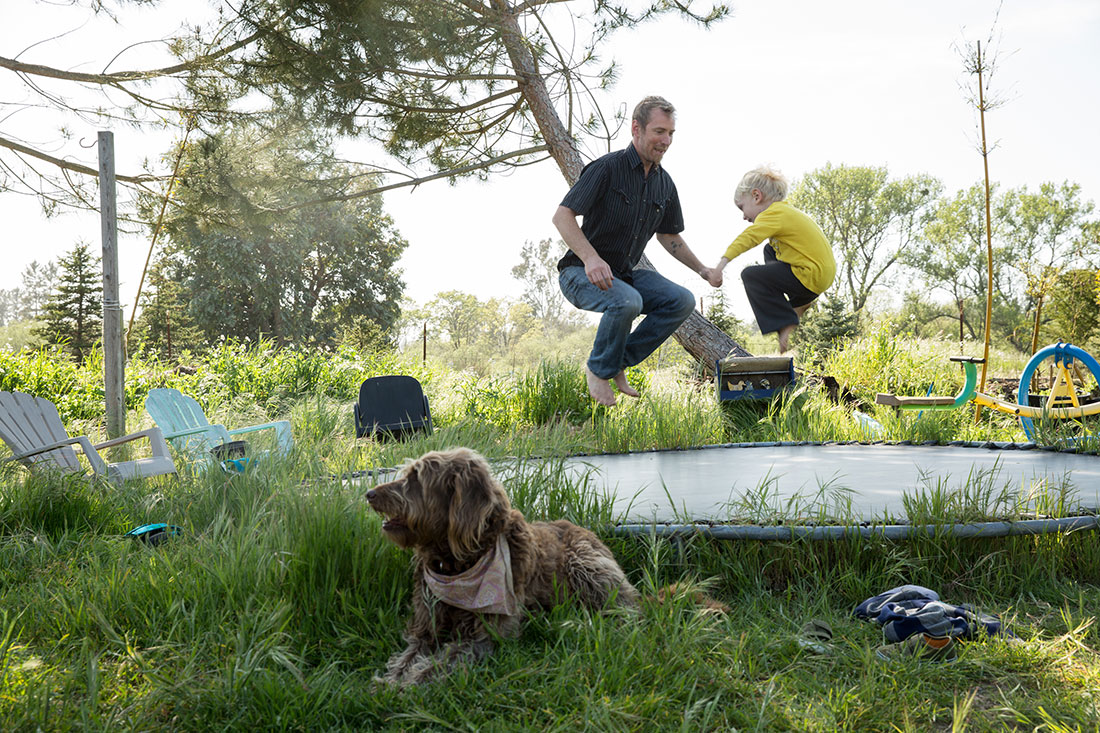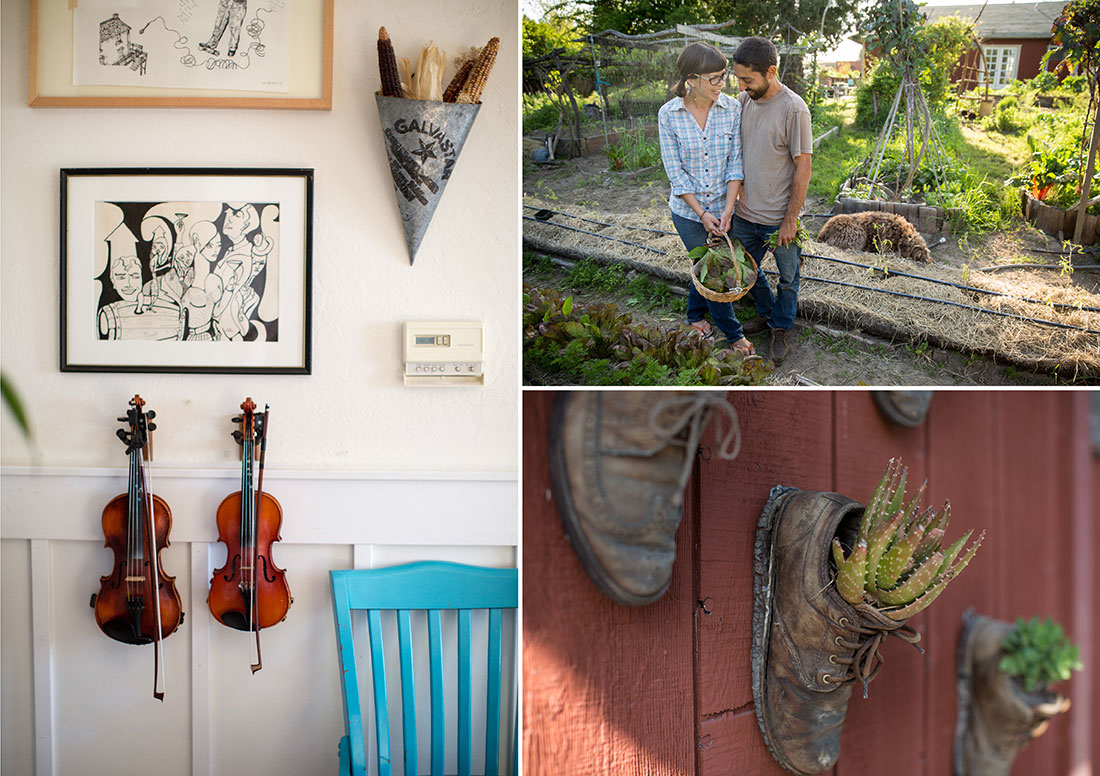On the edge of the Laguna Watershed in Sonoma County, at the end of a narrow gravel road, lies a small homestead developed by two families with a commitment to producing food and fiber in an atmosphere that weaves together aestheticism, function and fun.

Noelle Gaberman is a mother of two and a caretaker of five Suri and Huacaya Alpacas. She has been raising these animals for the last two years, and establishing a small family farm with her husband for the last six. “Small scale ranching is new to us, we just fell in love with these animals…. they add such a peaceful element to the land,” said Gaberman. Noelle’s family shares three acres with another family who is raising children the same age. The two homes, pasture and gardens were co-purchased by the two couples with the intent to share and develop common spaces and provide a nourishing setting to bring up the next generation.

What is so striking about Gaberman’s land is its proximity to the Laguna de Santa Rosa and the quality of the sandy soil throughout her acreage, and yet the family’s gardens were bursting with food, cover crops and colorful perennial flowers. Her explanation: “We’ve brought in a lot of compost over the years, and my husband is a trained permaculturalist who spends a lot of time between photoshoots working on the land with me.”
The couple accesses free compost through a county run program that supports efforts for people to grow food for more than just their own family, “If you’re producing food for more than your own household, you are provided free compost,” said Gaberman.

We were elated to see mounds of soil in Gaberman’s yard. Composting has always been an instrument for gardeners and farmers across the land to grow more robust plants, and we now know that it plays a critical role in balancing the carbon cycle on our planet. Part of Fibershed’s intention with these producer visits is to share carbon cycle education with those we are interviewing—and to illuminate in these exchanges the value that each of our local farms and ranches can potentially offer in the effort to reverse climate change.
Carbon is a shape shifter, and as we learn to recognize it in its various forms and understand how it moves through the five carbon pools we are able to understand the means for enhancing carbon storage in our soils—the place where carbon can do so much good for all life on earth.
We know that through applying compost to lands where animals graze we can ignite a state change in our soils, and begin to sequester significant amounts of carbon dioxide permanently. These efforts to apply compost on our rangelands and pastures will take effort by all: Urbanites sorting and ensuring their food waste ends up in the ‘green bin’… rural communities creating compost sites to transform urban waste streams and animal manure into life-giving compost. Policy shifts to financially incentivize compost applications… and consumers driving food and fiber producers to offer ‘carbon beneficial goods.’

Gaberman is intrigued by all of these efforts and has already begun to manage her alpaca herd in a way that is restoring her pastures and soils. This year she will be carefully grazing them through the landscape in tightly condensed groups—moving them through the grassland in a way that will ensure the land has time to recover before being grazed again. Noelle’s fiber and yarns hold a special appeal due to this care she takes for the land, and the artistry she brings to the whole of her life’s work.

Gaberman’s life began in the art world—a photographer by training, she has an eye for form, shape, and light. Her ability to compose and create has now been transposed onto the canvas of her home and farm. The homestead is infused with creativity in every nook and cranny.

For more information about Noelle Gaberman’s work producing natually colored and extraordinarily soft yarns you can check out her website: http://westcountyalpacas.com and follow her on her facebook page: www.facebook.com/WestCountyAlpacas.
Photos by Paige Green.
